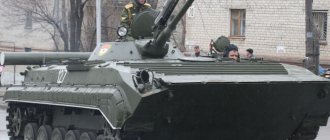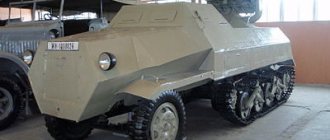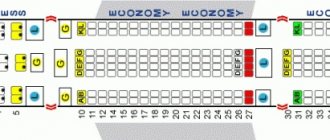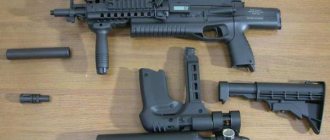History of creation
When chasing speed, the planes lost maneuverability. It was believed that close air battles were a thing of the past, that the outcome of the battle would be decided by powerful radar and missile weapons. But in practice this turned out to be far from the case. During air battles in Vietnam, the lighter and cheaper MiG-17, armed with cannons, defeated the expensive F-4 Phantom, equipped with various electronics. The result of an attempt to adapt the fighter to various flight modes, including close-in maneuverable air combat, was the appearance of aircraft with variable-sweep wings. The USSR adopted the 3rd generation fighter MiG-23. But this was a half-measure; a completely new aircraft was needed. In the Soviet Union, the tactical and technical specifications for a promising 4th generation front-line fighter were formulated in 1971. The new aircraft was supposed to have high speed and maneuverability, have a fundamentally new set of on-board electronics, and carry modern means of destroying air and ground targets. The program for creating a promising aircraft began to develop in two directions, as a result of which the Soviet Air Force received the Su-27 heavy fighter and the MiG-29 light front-line fighter.
The design of a promising 4th generation fighter at the Mikoyan Design Bureau began back in 1970. The vehicle was almost immediately given the designation MiG-29. A.A. Chumachenko was appointed head of the work on this topic, and the general coordination of the work was carried out by R.A. Belyakov, who headed the MiG Design Bureau in 1971. after the death of Artem Mikoyan. Even at an early stage of design, two machine layout schemes were considered. The traditional one, according to which the MiG-25 reconnaissance aircraft and interceptor were built, and the new, at that time, integral one, in which the wing with root flaps and the fuselage form a single load-bearing body. After a comprehensive analysis, preference was given to a new and promising integrated layout. This design had less drag and provided greater lift at high angles of attack. Equipping the leading edge of the wing with deflectable tips significantly increased its load-bearing properties. To ensure better stability at high speeds, two keels were installed on the vehicle. The engines and air intakes were located under the main body, which helped to avoid the fuselage shading one of the air intakes during steep turns, as is the case with a side arrangement. The MiG-29 aircraft became a breakthrough in many areas of the domestic aircraft industry. It was fundamentally new in aerodynamics, design, materials science and much more. For the first time, in the Soviet aircraft industry, composite materials were used. Instead of traditional aluminum alloys, carbon fiber was used for the manufacture of some components.
The MiG-29 power plant deserves special attention. To ensure high maneuverability and survivability, two RD-33 engines were installed on the vehicle. They were placed in isolated nacelles, spaced apart from each other, which also increased the survivability of the power plant. The aircraft is equipped with a wedge air intake. The automation, depending on the speed and altitude of the flight, extends or retracts the wedge, thereby regulating the amount of incoming air. The air intake inlet is equipped with a flap that closes when the engine starts. This is done to protect the engine from foreign objects when driving on the ground. At this time, air enters through the upper inlets located on the upper surface of the wing swells. After the plane reaches a speed of 200 km/h, they close and the shutter opens. On landing, everything happens in reverse order. The unique power plant ensures operation in any aircraft position, at any speed and at any disturbance in the air intake. It provides the MiG-29 fighter with a thrust-to-weight ratio greater than 1. This allows the vehicle to accelerate faster, perform unique maneuvers that are inaccessible to other fighters, and provides a high rate of climb. Construction of the MiG-29 prototype began in 1975, and it made its first flight on October 6, 1977. The car was piloted by test pilot Alexander Fedotov. During testing, the design of the MiG-29 did not undergo major changes. 14 vehicles took part in the test flights. On some, flight performance characteristics were assessed, on others, engines, on-board equipment and weapons were tested.
The MiG-29 was equipped with a fundamentally new radio-electronic complex and weapons systems. It included a radar station capable of detecting targets at a distance of up to 60 km and simultaneously tracking 10 of them. Thermal direction finder allows you to detect aircraft by the heat signature from their engines. A helmet-mounted target designation system was developed especially for close combat, which allows you to visually track a selected target by turning your head and transmit target designation to missiles. The latest missile weapons were created especially for the MiG-29. It included R-73 close-range missiles, capable of hitting the enemy at a distance of 300m to 30km, and R-27 medium-range missiles with a launch range of up to 70km. The cannon armament consisted of a 30mm GSh-301 cannon with 150 rounds of ammunition. For strikes against ground targets, the MiG-29 is capable of carrying a variety of bombs, guided and unguided missiles.
State tests of the MiG-29 fighter ended in 1983. The aircraft showed excellent flight, maneuverability and combat characteristics. It turned out to be easy to control, had minimal turning radii and allowed it to reach large angles of attack. Serial production of MiG-29 aircraft was established at the aircraft plant in Moscow; combat training vehicles were produced in Gorky. In the summer of 1983, the first production fighters entered the Air Force, and the mass supply of MiG-29s to air units began in 1986. The flight crew highly appreciated the new aircraft for its outstanding maneuverability in a unique range of speeds and altitudes, and the effective weapon system allowed for highly maneuverable air combat. In addition to its aerobatic and combat qualities, the pilots really liked the cockpit, which had excellent ergonomics. The new fighter and technical staff also praised it. Technicians noted the simplicity and ease of maintenance of the new machine.
In 1988 The MiG-29 was shown at the Farnborough International Air Show, where it amazed Western military specialists with its aerobatic and combat capabilities. The MiG-29 became the first Soviet combat aircraft to be widely presented to the public in the West. Previously, only civil aircraft and helicopters were demonstrated at international exhibitions. In NATO coding, the MiG-29 received the designation Fulcrm (fulcrum). After gaining great fame abroad, it became widespread in various countries of the world. The MiG-29 aircraft, of various modifications, was supplied to Bulgaria, Vietnam, East Germany, India, Syria, Iran, Cuba, Malaysia, Sudan, Romania, Czechoslovakia, Yugoslavia, Eritrea. In total, about 1,500 MiG-29 fighters of all modifications were produced.
MiG-29 fighters took part in several armed conflicts. Unfortunately, it is not possible to objectively evaluate them. Since in almost all collisions with NATO aircraft, a significant numerical superiority was always on the enemy’s side. In addition, after attacks on ground-based radars and command posts with cruise missiles in the first hours of hostilities, the MiG-29s were left without guidance and target designation, which initially put them in a losing position. Although in repeated training battles with F-15, F-16 and other Western fighters, the MiG-29 won.
Description
Deck-based MiGs are multifunctional all-weather vehicles of the “4+” generation. Their task includes anti-aircraft and anti-ship defense of a formation of ships, striking enemy ground targets.
MiG-29KUB (9-41) with PAZ-MK hose extended
List of changes made to the deck version of the fighter: the anti-corrosion protection of the airframe has been improved, the landing gear has been strengthened, and the front strut mechanism has been completely rebuilt to suit operating conditions, the airframe has been strengthened, the proportion of composite materials has been increased to 15%, the landing parachute has been removed, a hook (landing hook) has been installed, folding wings were made, the wing mechanization was improved to improve takeoff and landing characteristics, the fuel reserve was increased, an in-flight refueling system was installed, the weight of weapons was increased, the visibility of the aircraft in the radar range was reduced, the aircraft was equipped with a multifunctional multi-mode pulse-Doppler airborne radar station "Zhuk-ME" ", RD-33MK engines, new EDSU with quadruple redundancy, avionics standard MIL-STD-1553B with open architecture.
The MiG-29K can be based on aircraft-carrying ships capable of receiving aircraft weighing over 20 tons, equipped with a take-off ramp and a landing arrestor, as well as on ground airfields. The aircraft are armed with RVV-AE and R-73E guided missiles for air combat; anti-ship missiles Kh-31A and Kh-35; anti-radar missiles Kh-31P and adjustable aerial bombs KAB-500Kr for hitting ground and surface targets.
Technical characteristics of the MiG-29 aircraft:
Wing span: 11.36 m. Length (with PVD boom): 17.32 m. Height: 4.73 m. Empty weight: 10900 kg. Normal take-off weight: 15300 kg. Maximum take-off weight: 18100 kg. Max flight speed 2450 km/h. Flight range without PTB: 1430 km. Practical ceiling: 18000 m. Maximum overload: 9 units. Rate of climb: 330 m/s engine type: 2xTRDDF RD-ZZ; maximum thrust: 2x5040 kgf thrust in afterburner: 2x8300 kgf Crew: 1 person. Armament: single-barrel 30mm cannon GSh-301, ammunition 150 rounds, combat load - 2000 kg on six underwing units: two R-27R missiles, 6 R-60M or R-73 missiles, 500 or 250 kg bombs, KMGU, unguided missiles.
Jet Age
An unpleasant surprise for American pilots was the MiG-15, which in terms of speed and maneuverability characteristics was superior to the vaunted products of Northrop and other US manufacturers, who considered their equipment unsurpassed. In the skies of warring Vietnam, the MiG-17 and MiG-21 interceptors performed excellently. There were other aircraft models, MiG-19 and MiG-23. During Israel's war with Egypt, the super-powerful MiG-25 repeatedly violated the front line, conducting raids over Tel Aviv. And although it did not carry any weapons, the very fact of the unpunished flight of a Soviet plane over a country armed with the latest American air defense systems cooled many hotheads. A number of regional conflicts, in which Soviet MiG military aircraft showed their best side, became a kind of advertisement for this brand, a guarantee of the quality and highest efficiency of Soviet military equipment. The crowning achievement of the designers' efforts was the MiG-29. Even today, 37 years after the completion of the main design work, the technical characteristics of this fighter fully meet the modern requirements for combat vehicles of this class.
Photos walkaround MiG-29 9-13
I present to you a photo walkaround review of the MiG-29 aircraft, taken at the Central Museum of the Soviet Army on August 23, 2014. As for the MiG-29 models, we will talk about them in the next article. We will pay special attention to the new product from the Russian MiG-29 9-13.
1
The embodiment of advanced technologies
The base model of the MiG-29 turned out to be a successful design solution with a colossal modernization resource. Back in 1982, the designers of the OKB named after. Mikoyan took up the creation of the 4+ generation fighter MiG-29M.
The developers were tasked with increasing the effectiveness of hitting air and ground targets, that is, making the fighter multi-purpose, as well as increasing the flight range and improving the pilot’s working conditions.
Also on topic
Artificial intelligence at supersonic speeds: Russia is developing a new MiG-41 fighter
The new MiG-41 fighter, which should replace the MiG-31 interceptor, will be able to operate in space. About this at the International...
The emergence of new analog-digital fly-by-wire control systems (instead of mechanical ones) made it possible to create versions of the MiG-29 with a longitudinal statically unstable aerodynamic design. This meant that it became impossible to control the machine without the help of automation, but the designers achieved a significant improvement in maneuverability and flight range.
In addition, the updated versions of the MiG-29, thanks to the use of stealth technologies, are distinguished by their stealth. The capacity of the fuel system was increased on the vehicles, and an in-flight refueling function appeared.
For example, the MiG-29M can track up to ten targets and fire at four simultaneously. The detection range of enemy fighters is up to 80 km. The designers paid a lot of attention to the pilot's workplace - the visibility from the cockpit (cockpit) was improved, the ergonomics and information content of the weapons display and navigation systems were increased.
- MiG-35
The embodiment of the advanced technologies of the MiG Corporation is the MiG-35, close to the fifth generation. Experts consider the new product a deep modernization of the MiG-29, noting a number of design changes, wider use of composites and equipment with modern automated systems.
In particular, the MiG-35 is equipped with a Zhuk-A airborne radio-electronic station (BRLS) with an active phased array antenna. As a result of modernization, the power of the Zhuk-A almost doubled. The Ministry of Defense plans to replace the entire MiG-29 fleet with the MiG-35.
Photos walkaround MiG-29 9-12
Today I am adding a photo review of a walkaround of the MiG-29 9-12 aircraft, taken on September 4, 2020. In the Vadim Zadorozhny Museum in Moscow.
1
Disasters
On June 23, 2011, in the area of the Kabanovsky farm (Astrakhan region), while performing complex aerobatics during a test flight, a MiG-29KUB carrier-based fighter crashed, taking off from the Akhtubinsk airfield, owned by the Russian Aircraft Corporation MiG and intended for delivery to the aircraft carrier Admiral Gorshkov " At first, information appeared in the press that the pilot and navigator managed to eject, but died. Later, representatives of the Ministry of Defense officially announced that both pilots, Oleg Spichka and Alexander Kruzhalin, died as a result of the crash.
To investigate, a special commission of the Ministry of Defense was created with the participation of representatives of the military-industrial complex: and in particular, it was announced that a group of specialists from the MIG corporation, led by General Director Sergei Korotkov, flew to the site of the plane crash and would take part in the investigation of the accident. By decision of the Commander-in-Chief of the Russian Air Force, Colonel General Alexander Zelin, flights of MiG-29 fighters similar to the one that crashed were suspended until the causes of the disaster were clarified.
According to unconfirmed reports, the disaster occurred due to a coincidence of circumstances (bad weather conditions, errors in documentation when calculating the test flight plan, in the prevailing psychology of people and their interaction during any test work).
A little about appearance
In those years, even the appearance of a new type of weapon was a state secret. Indeed, many revolutionary technical solutions, including conceptual ones, became a distinctive feature of the MiG-29 interceptor. A photo carelessly published in the press, or a recording of a demonstration flight shown on television, could lead specialists from the hostile camp to think about the main line of aircraft manufacturing of the future. According to the idea of the Chief Designer M. Waldenberg, supported by R. Belyakov, who replaced Artem Mikoyan as General, the aircraft had a so-called integrated circuit layout. This means that the design bureau has moved away from the division of the structure into planes and fuselage, which is customary in world aviation. The entire airframe consisted of smooth transitions, swells, with “classic” side walls only in the bow.
The secrecy measures were by no means an unnecessary precaution. The specialists who designed MiG aircraft were also able to spy on other people’s new products. A photo of the adjustable air intake of the mentioned Phantom, taken at one of the air shows, at one time gave invaluable information to our engineers. A similar unit was used on the MiG-23.
View gallery
With different emblems on the wings
After the collapse of the USSR, the military aircraft fleet of a single state was divided between the former Soviet republics. Experiencing financial difficulties, many of them began to sell equipment they did not need. For example, Moldova lost two dozen used MiG-29s to the United States. The cost of each aircraft was $2 million, which is many times lower than the market price. The Americans needed this interceptor to practice tactics in combating the air forces of the countries in which it is in service. MiGs were sold to conflict zones in Africa, Asia and other parts of the world.
The air forces of the Warsaw Pact countries were also armed with MiG-29s. Almost all of them came to the disposal of Russia’s “partner” in the person of NATO. The pilots of the German Luftwaffe, accustomed mainly to American technology, were pleasantly surprised by the ease and ergonomics of control - characteristic qualities of the MiG-29. Photos of the Soviet fighter with Maltese crosses (identification marks of the German Air Force) at first caused bewilderment among the uninitiated, then everyone got used to it.
View gallery
The aircraft is in service with more than twenty-five countries, and they have no plans to change it for anything yet.
When choosing a defense supplier, foreign governments are guided primarily by military merit and political considerations. But the financial aspect of the transaction is also important. The MiG-29, which costs approximately 70-75 million dollars per unit, can solve most specific military tasks no worse than its overseas competitor F-15, for which they “ask” up to hundreds of millions. In our time of crisis, such a difference clearly plays into the hands of the Russian Oboronexport.
Features[1]
In the design of the MiG-29M airframe, compared to the MiG-29, there are no upper air intakes; the engines are protected from foreign objects by a grille. The wing flap is sharp, the aileron span has been increased, the fly-by-wire control system is analog with 4-fold redundancy, which increases the aircraft's combat survivability. The area of the brake flap is about 1 m². The 17 m² drogue parachute was replaced by two parachutes, each 13 m² in area, which reduced the length of the landing run.
Composite materials are used in the design of engine air intakes, brake flaps, fins and wings. The fuel volume increased by 1500 liters compared to the MiG-29.
The aircraft is controlled without taking your hands off the control sticks - the HOTAS system is implemented. An active jamming station is installed, and there are 120 IR traps on the fuselage. The visibility from the cockpit has also been improved.
It is possible to carry 4 R-27ER air-to-air guided missiles (previously 2) with a firing range of 130 km.
Design:
- 20% - aluminum-lithium alloy "1420"
- 25% - steel
- 27% - aluminum
- 3% - titanium
- 8% - composite materials
The airframe life is 2500 hours, the engine life is 1200-1400 hours.
Fuel mass +2550 l (in place of the air valve flaps), total reserve +1500 l (6000 - 6250 l)











